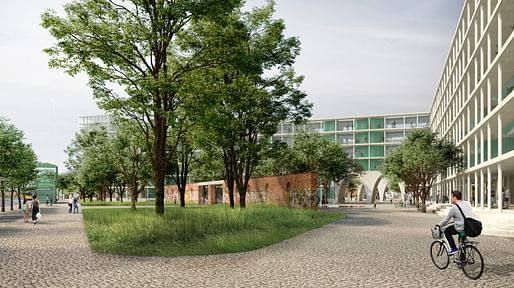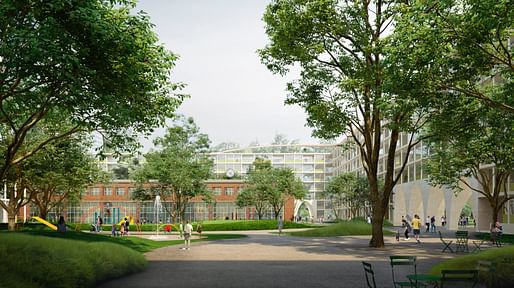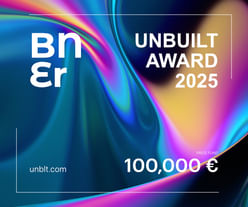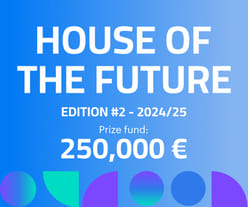
David Chipperfield Architects had the winning proposal to revive Berlin's Georg-Knorr-Park, a former industrial and production site in the Marzahn district, into a residential and commercial neighborhood. Located on a 9-hectare site that includes historic buildings and surrounding urban infrastructure, the 152,000m2 project will provide 1,400 affordable apartments and some 90,000m2 of office and commercial space. Collaborating with Wirtz International Landscape Architects, DCA also included spacious, lush inner courtyards, the largest of which will function like a “town square” that will provide a childcare center, restaurants, and cafes for local residents and visitors.
David Chipperfield Architects shared more details to their winning proposal below.

“A new urban structure composed of courtyard buildings and towers of differing dimensions adopts the existing orthogonal order of the neighboring industrial complex, while integrating the listed buildings and building elements. Open arcades are positioned on the outside of the new blocks, providing structural noise protection from the urban surroundings and allowing light and air into the apartments from both sides,” David Chipperfield Architects says.
“At the same time, the arcades provide the residents with a space to meet and commune. Addressing the new quarter, three towers rise above the quarter. Their vertical visibility echoes the neighboring towers in Marzahn-Hellersdorf, entering into a higher-level urban dialogue.”

“The structure of the courtyard buildings enables the large area to be divided into smaller urban zones, creating spaces of identification. This structure establishes manageable living communities and creates a place that responds to human scale. Based on a column grid, a system consisting of three different modules allows spatial flexibility for the configuration of individual apartments and the commercial and retail spaces at ground level.
Surrounded by a protective green belt, integrating public sports and playgrounds, a comprehensive, widely diversified path system extends into the interior of the neighborhood for pedestrians and cyclists. Due to the direct connection to public transport, the neighborhood is almost car-free. Generous arches facilitate intuitive orientation and public uses are located along a central axis. The largest, centrally located courtyard is perceived as a town square with a childcare centre, restaurants and cafés, providing a meeting point for the neighborhood and its visitors.”

“The spacious inner courtyards are designed as unsealed areas with lawn landscapes and many trees With resting spots, places of activity, community gardens, playgrounds and organized meeting areas for senior citizens, natural spaces are created in which every age group feels comfortable. The expansive green roofs, which function as a fifth façade, provide space for sport or places to meet and promise spectacular views over the city for all residents.”
More drawings in the gallery below.

Peja Culture Pavilion
Register by Wed, Dec 11, 2024
Submit by Tue, Jan 28, 2025

The Buildner UNBUILT Award 2025 / 100,000€ Prize
Register by Thu, Mar 6, 2025
Submit by Thu, Nov 20, 2025

250,000 € Prize / HOUSE OF THE FUTURE 2024/25
Register by Wed, Apr 30, 2025
Submit by Mon, Jun 2, 2025

Show Garden Competition for Seoul International Garden Show 2025
Register/Submit by Wed, Dec 18, 2024
1 Comment
i love how strongly the landscape is woven into the buildings; they seem totally inseparable and given equal care.